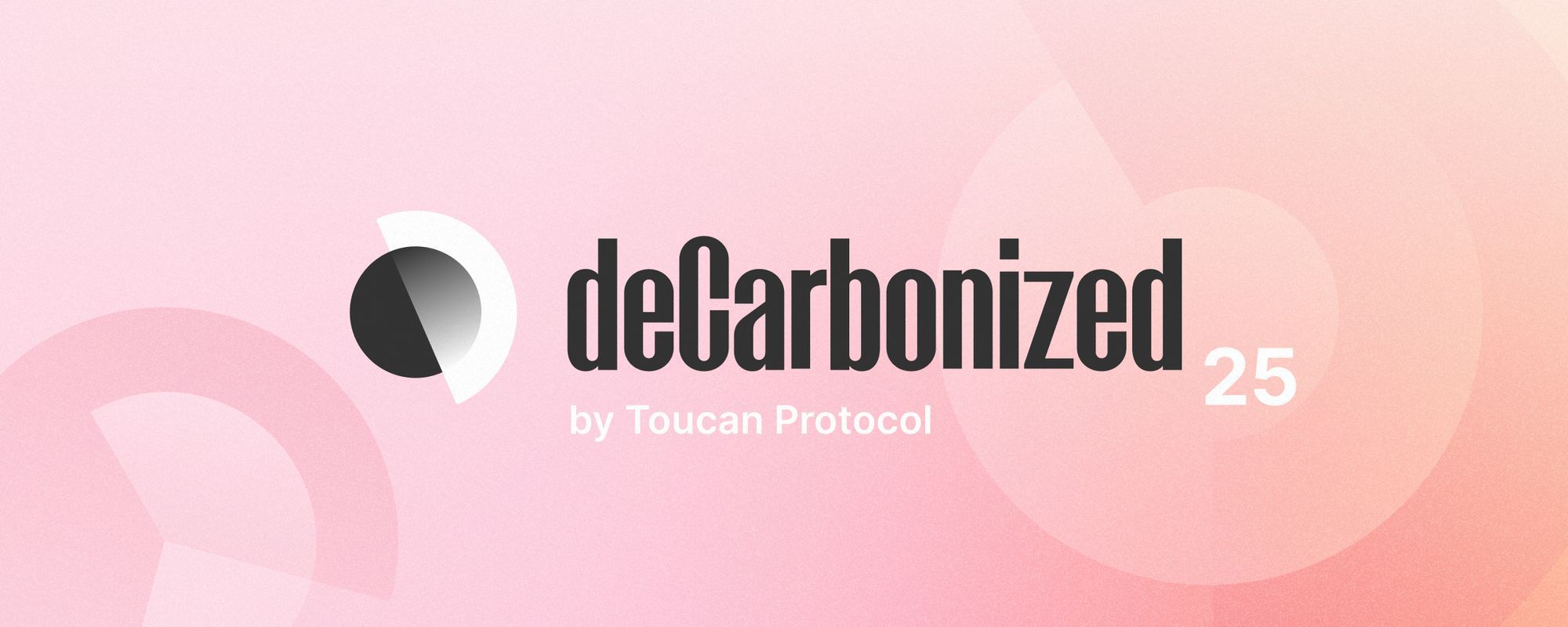deCarbonized #25: Minimizing carbon tokenization risk; £54m for carbon removal tech


📢 Top news picks
- Pina Earth raise $2.5m to develop sustainable forestry credits
- Verra launches pre-consultation on new ABACUS label for high quality, nature-based credits
- UK government contributes £54m to 15 carbon removal technology projects
- Decentralized crypto exchange SushiSwap embeds carbon offsetting option
- Aboriginal Carbon Foundation partners with Australia's largest general insurer to develop new carbon farming projects
💵 If you’re a VC or interested in more investment news, check out the web3 for climate newsletter
⛓ Market action
Weekly carbon stats
Toucan Protocol is building carbon market infrastructure to finance the world's best climate solutions. These are our on-chain stats from 06.07- 11.07.22:

Carbon prices as of 04.07.22, with 7 day change:
BCT - $1.93 (+2.1%) | NCT - $3.02 (-3.8%)
NGEO - $8.82 (+6.3%) | GEO - $3.96 (-3.4%) | EU-ETS - $82.69 (-4%)
🐦Team Toucan will be at ETHCC and Co-Founder Raph will speak at the Sustainable Blockchain Summit. Keep your eyes on our Twitter for more details!

🔍 Research in focus
Minimizing carbon tokenization risk
Leading global law firm HFW recently released a report exploring the legal implications of blockchain technology on the voluntary carbon market.
As innovative projects have emerged in the space, industry task groups are beginning to mobilize to understand their deeper market implications. These efforts primarily focus on the tokenization of carbon credits and how they can best be utilized to minimize risk and maximize potential VCM rewards moving forward.
As tokenized carbon credits potentially broaden access to an already under-regulated market, it is important that they don't further contribute to integrity issues and instead assist in resolving them. Indeed, blockchain based carbon credit records are well positioned to do this, however it should be ensured that these provide full details on credit origin and vintage, and that they become part of transparent, high quality token pools. These measures help limit buyer confusion.
Beyond these quality measures, there are additional legal considerations to be considered to ensure tokenization risk is minimized:
- Consumer protection and auditable transparency: As barriers to market entry are reduced, it should be ensured that tokenized carbon accurately represents the underlying credit as closely as possible.
- Market stability: Using 2-way carbon bridges (that enable credits to be brought both on and off chain) will help prevent large price arbitrages between these two markets, limiting price volatility and enabling price discovery.
- Digital identity (KYC): Identity checks should be used to prevent bad actors from misusing carbon assets, for activities including bribery or money laundering.
- Legal connection between the token and carbon credit: Deeper understanding of the legal framework and rights that connect tokenized carbon holders with the physical credit will assist in minimizing user risk.
- Environmental considerations: The blockchain onto which a credit is tokenized will have its own carbon footprint associated with its operation. It should therefore be ensured that these emissions are understood and also accounted for.
As blockchain and web3 projects continue to emerge, ongoing cooperation with regulators is therefore key to ensuring that they contribute to effective climate action.
Read the full report or check out Flow Carbon’s excellent summary.

💼 Jobs board
- Validation & Verification Coordinator, Plan Vivo Foundation - Edinburgh Remote
- Web3 Engineer / Climate Solutions, Open Earth Foundation - Global remote
- Data Engineer, SoilWatch - Finland remote
- Senior Business Development Manager, Climeworks - Zurich, Switzerland

Thank you for reading deCarbonized! 👏
🚨 As of next week deCarbonized will be sent fortnightly, allowing us to bring you more detailed, in-depth coverage of the carbon/web3 space! 🚨
Reach out to us on social and join the community ✨
Enjoy deCarbonized? Suggestions on what to cover next? Let me know! @DrHolWat
Toucan is building the technology to bring the world's supply of carbon credits onto energy-efficient blockchains and turn them into tokens that anyone can use. This paves the way for a more efficient and scalable global carbon market.

